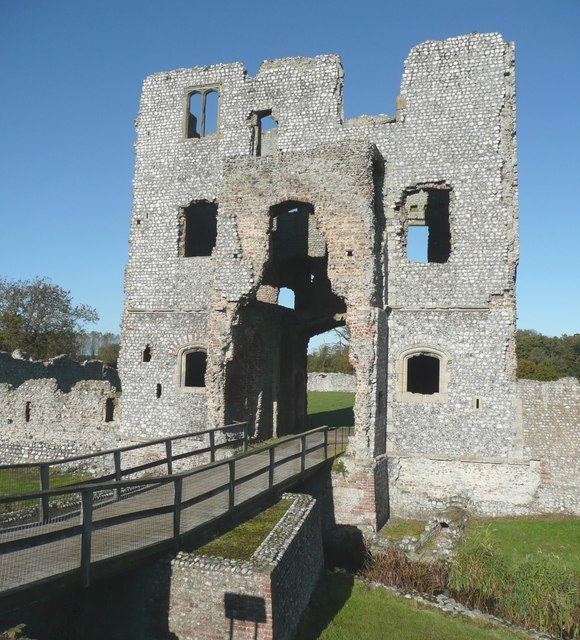Type Fortified manor house Phone +44 370 333 1181 | Open to
the public Yes Owner English Heritage | |
 | ||
Grid reference grid reference TG121381 Address English Heritage, Baconsthorpe Castle, Baconsthorpe NR25 6LN, United Kingdom Hours Closed now Monday9AM–5PMTuesday9AM–5PMWednesday9AM–5PMThursday9AM–5PMFriday9AM–5PMSaturday9AM–5PMSunday9AM–5PM Similar Castle Rising, Felbrigg Hall, Binham Priory, Weeting Castle, Castle Acre Priory | ||
A tour and history of baconsthorpe castle
Baconsthorpe Castle is a fortified manor house, now a ruin, to the north of the village of Baconsthorpe, Norfolk, England. It has been designated by English Heritage as a Grade I listed building, and is a Scheduled Ancient Monument.
Contents
- A tour and history of baconsthorpe castle
- A short ghost story a walk into spirit at baconsthorpe castle
- History
- Construction
- Inner Gatehouse
- The Quadrangle
- The Outer Gatehouse
- Present condition
- References
A short ghost story a walk into spirit at baconsthorpe castle
History
The Heydons were an ambitious family. They first made their fortunes through the Law profession and subsequently from wool. John Heydon rose to prominence and influence as a supporter and ally of the 1st Duke of Suffolk, William de la Pole. During the turbulent Wars of the Roses (1455–1485) John often switched his political allegiance to serve his own purposes. Although he managed to amass great wealth, he also made many enemies, and was described by contemporaries as crafty and quarrelsome. His position meant he needed a secure base from which to operate.
Construction
This castle was built from around 1460 to 1486 by John Heydon (died 1479) and Sir Henry Heydon (died 1504). It was built without a licence to fortify and initially consisted of a quadrilateral manor house which was later fortified. It became increasingly large and more elaborate as the family's wealth grew. The east side contained a lake, the other three were protected by a deep ditch.
Inner Gatehouse
A three-storied gatehouse was built in the middle of the south wall. It was an important symbol of John Heydon's Lordship. This gatehouse was also large enough to serve as a self-contained defensible residence in times of danger. The gatehouse had two lodges on the ground floor, one of which housed a porter, the other the chief servant. There was a spacious suite of chambers for Heydon family on the first floor. There is a description of these rooms in the will of John Heydon's son, Sir Henry Heydon. They are described as being luxuriously furnished with feather beds and silk curtains. The small room directly above the porch was thought to be a private chapel.
The Quadrangle
The quadrangle was completed with walls, towers and a range of buildings. A service range of buildings stood on the eastern side of the quadrangle. These buildings were converted in the Tudor period by Sir John Heyden II into a wool processing factory. The large windows in this building provided plenty of light for the spinners and weavers that worked there. Much of the cloth produced at Baconsthorpe was sold to the Netherlands. The coarse material was softened by the process of "Fulling". This involved the pounding of the cloth by foot in soapy water or stale urine. It is thought that this process was carried out in the tower that stands on the northeast corner of the quadrangle
The Outer Gatehouse
A drawbridge crossed the moat and 46 metres (50 yd) to the south an outer gatehouse was built. The outer gatehouse was a later addition to the moated residence beyond and was built to display the family's status and wealth. It formed an impressive entrance to the Heydon's property as part of the outer court. The court was flanked on the east side by a row of cottages. On the west flank was a long barn parts of which are still in use today by the local farmer.
The house was subject to a dispute in the 16th century when its owner, Sir William Heydon (1540–1594) fell into debt and mortgaged it. He decided to sell part of his property in 1590 but was challenged by his son, Sir Christopher Heydon (1561–1623). Sir William then threatened to demolish the house, but Sir Christopher secured a prohibition order from the Privy Council and the house was spared. The house fell into ruin after the Civil War.
Present condition
The ruins are constructed of flint with some brick. The curtain walls are complete and include the remains of towers, forming a square court of 30 m (98 ft 5 in). The remains of a three-storey gatehouse with a two-storey projection for the drawbridge are in the middle of the south wall. The remains of a two-storey range are along the east wall.
The ruins are administered by English Heritage and are freely accessible to the public.
